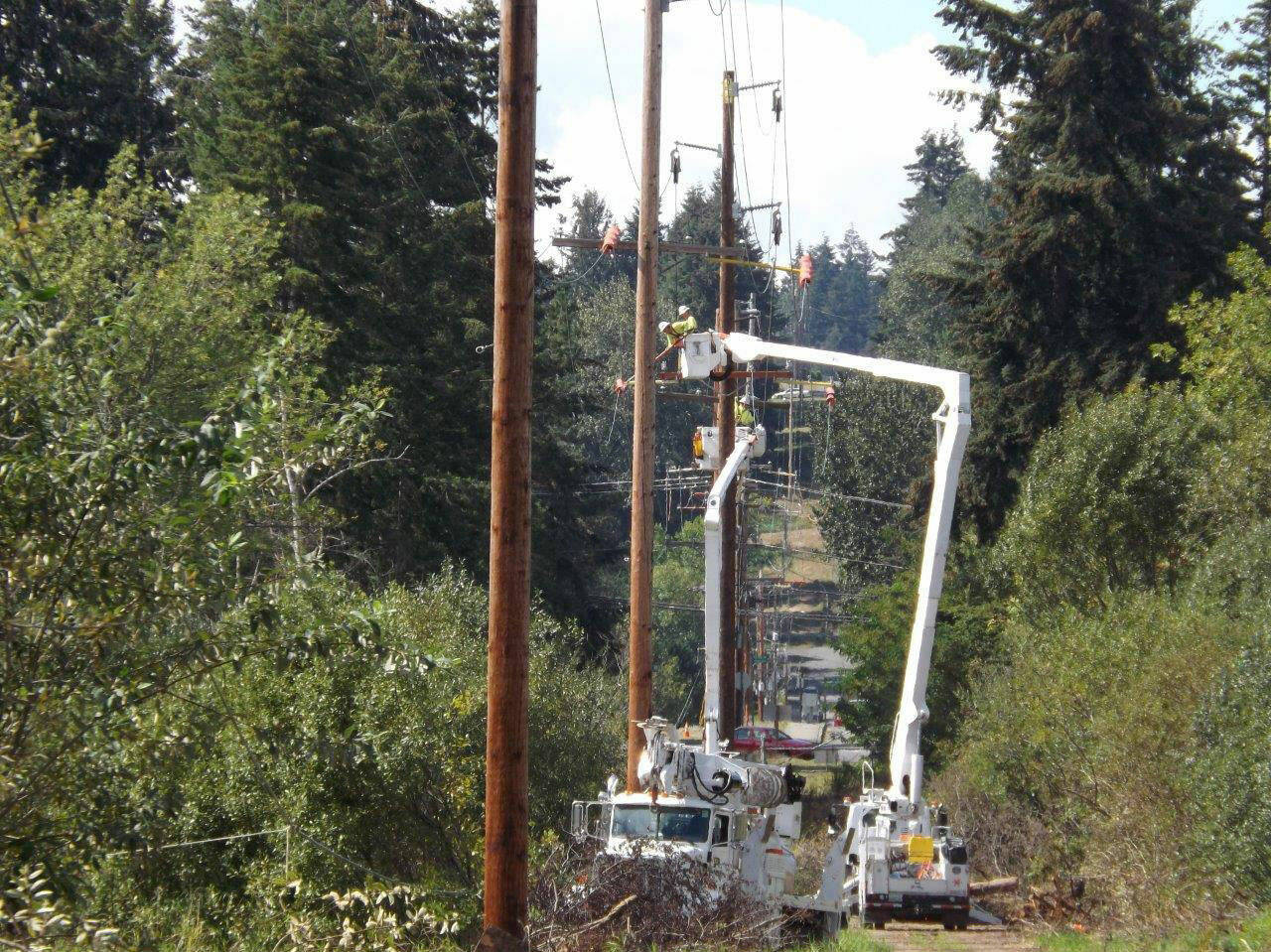We islanders disagree on many things, whether it’s politics, sports or which movies to watch.
But we’re all united in one way: that sinking feeling that hits us the moment that the lights in our houses flicker, and we know we’re about to be hit with yet another power outage.
Rather obviously, most outages occur because of storms. Wind, ice and snow — or all three — are a bad combination on a rural, heavily forested island where it sometimes seems that power goes out if someone so much as looks at a tree the wrong way.
Indeed, downed trees represent the single-most common cause of outages. Anyone can cope with a simple outage that lasts a couple of hours, but in blizzards or gales, damage from fallen trees alone can result in outages that in the worst case can persist for days. Those with wood stoves, solar panels or generators manage to get by; but not so for the many people whose heat and light are entirely dependent upon the power grid.
There’s also the occasional issue of an inattentive or alcohol-impaired driver running into a utility pole, but fortunately, this doesn’t happen a lot and creates only a very localized problem that’s usually easy to fix.
Puget Sound Energy (PSE) is responsible for generating Vashon’s electricity, and for maintaining and repairing equipment. So what exactly is PSE’s process for responding to power outages on the island?
“Each storm is unique in the challenges it may bring in restoring power,” said Melanie Coon, who works in PSE’s Public Relations office. Coon referenced the recent storm that dumped more than a foot of snow on the Seattle region, including on Vashon. “In a large portion of our service area, we experienced flooding, downed trees, landslides, snow, ice and associated road closures, and access issues. These things all limit our ability to assess damage and begin making repairs.”
In any outage, large or small, the first step in the process is damage assessment. Local crews — these are PSE employees who live on the island — go out to see what needs to be repaired; this means typically that one or two people drive around in a truck to the site in question.
These “electrical first responders”, as they’re known, can make repairs if the issue is relatively minor — such as a tree limb coming down and short-circuiting a power line; they’re also responsible for ensuring that the site is safe. If the problem is more serious, the first responders work in conjunction with larger “line crews,” some of whom may come over from the mainland. Coon noted that, in extreme weather situations, PSE has the ability to independently transport crews to the island without relying on the regular ferry service.
The line crews take on the more serious issues, such as repairing transmission lines or fixing damage to the distribution and service lines that directly serve homes and businesses. In practice, this can involve anything from installing a new utility pole to restringing wires, or even replacing underground cables. They may have to work with others, especially if downed trees or access roads need to be cleared.
After repairs are complete, the electrical system is re-energized, a process that can sometimes be effected remotely (i.e. from off-island). The system works in sections or circuits, and there are four such circuits on Vashon, with power coming into the island across the water from both the west and the east.
This compartmentalization allows PSE to isolate problem areas and reroute power around them, and is why you’ll often see some neighborhoods with power while others nearby still have none. Recently, PSE has been working to install what they term “feeder ties,” which allow one circuit to temporarily supply power to another while repairs there are being undertaken.
In major storm events, priority is always given to the highest level in the system — repairing the high-voltage transmission lines that provide power to substations serving large numbers of customers in a broad service area.
What exactly is a “substation?” There are several types, but most include transformers to change voltage levels between the high voltages that come in on the main transmission lines and the lower voltages needed for distribution to customers. It’s not economical to directly connect electricity consumers to the main transmission network, unless they use large amounts of power (no one on Vashon does), so the substation reduces the voltage to a level suitable for local distribution.
Priority for repair is also given to essential services — hospitals, fire stations, waste treatment facilities, energy and transportation.
During the year, PSE invests considerable effort in actions that help prevent problems from occurring in the first place. There is an ongoing program of tree-trimming, and more recently the utility has begun a “tree wire” project which involves fortifying power lines with a kind “body armor” that reduces the chance of lines being damaged from falling tree limbs.
PSE has invested $3.5 million dollars into one such effort around West Side Highway, and expects to complete that project by this coming spring. Another tree wire project is in the planning phase for the Cove Road area.
While outages are frustrating, you should spare a thought for the PSE workers who have to go out and deal with the giant mess that big storms create. PSE line crews have to work in wind, rain, snow and sometimes bitter cold. So while you may be huddled inside at such times, frustrated at not having power, at least you’re inside!
— Phil Clapham is a retired whale biologist who frequently contributes to The Beachcomber.


